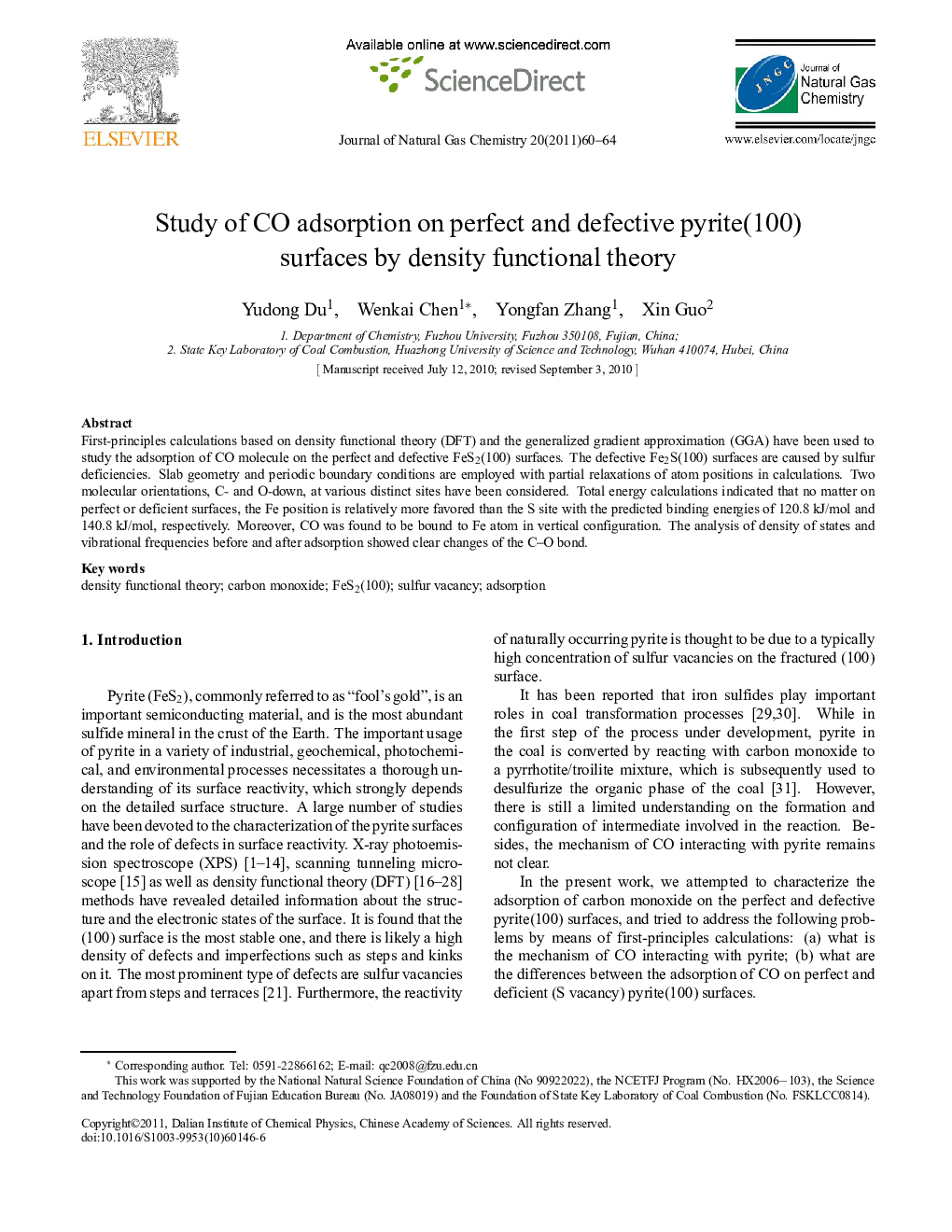| Article ID | Journal | Published Year | Pages | File Type |
|---|---|---|---|---|
| 71528 | Journal of Natural Gas Chemistry | 2011 | 5 Pages |
First-principles calculations based on density functional theory (DFT) and the generalized gradient approximation (GGA) have been used to study the adsorption of CO molecule on the perfect and defective FeS2(100) surfaces. The defective Fe2S(100) surfaces are caused by sulfur deficiencies. Slab geometry and periodic boundary conditions are employed with partial relaxations of atom positions in calculations. Two molecular orientations, C- and O-down, at various distinct sites have been considered. Total energy calculations indicated that no matter on perfect or deficient surfaces, the Fe position is relatively more favored than the S site with the predicted binding energies of 120.8 kJ/mol and 140.8 kJ/mol, respectively. Moreover, CO was found to be bound to Fe atom in vertical configuration. The analysis of density of states and vibrational frequencies before and after adsorption showed clear changes of the C-O bond.
